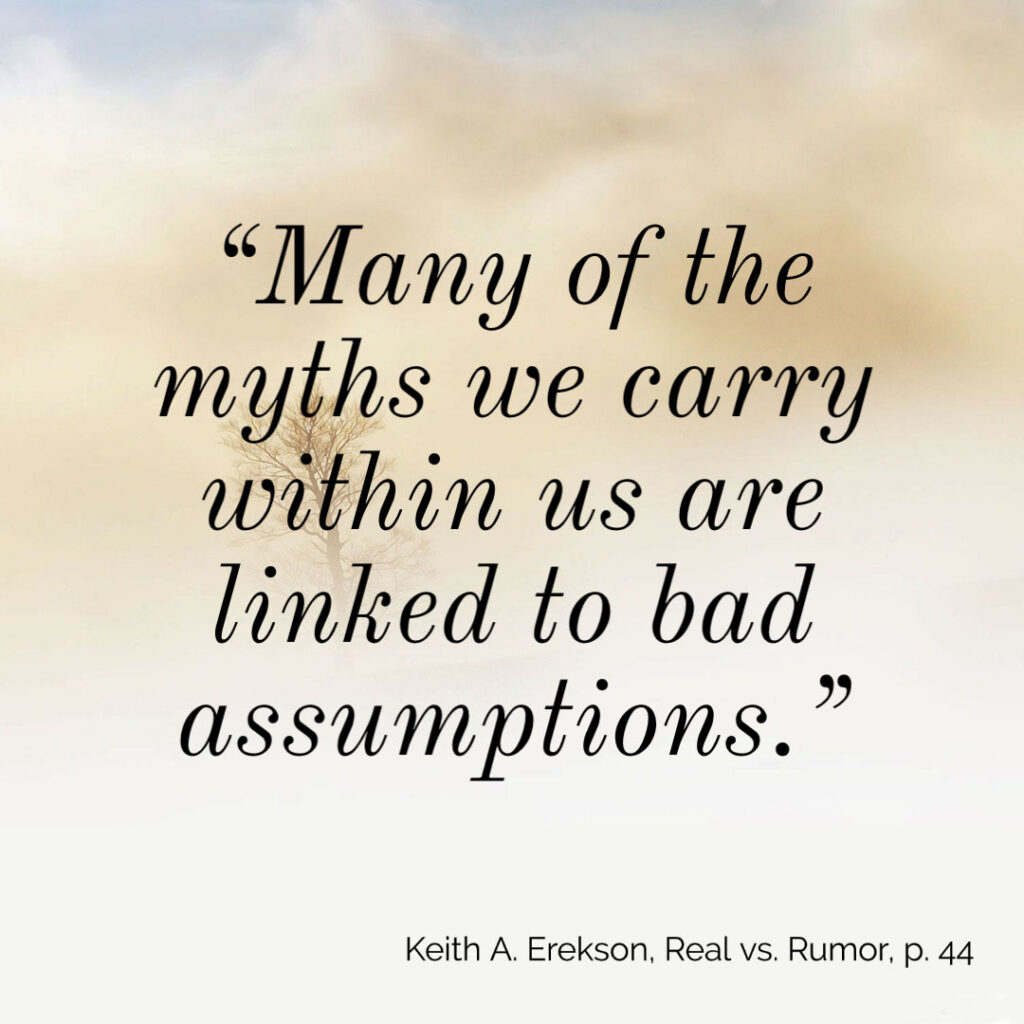From Chapter 3 (p. 39)
Frequently, so-called challenges with Church history stem from bad assumptions in the present. We assume that other people at Church don’t have problems, that the Book of Mormon peoples spread across the entire western hemisphere, that prophets never get tricked, or that things were simpler in the past. We assume one should never speak of Mother in Heaven or of temple ordinances or of questions that trouble us. Poor assumptions can cause error and harm. In cases like the temple elevators, a person who first feels impressed by this story may later feel betrayed when learning the truth. As we identify and address the assumptions in our thinking, we follow Paul’s counsel to “prove all things; hold fast that which is good” (1 Thes. 5:21). It takes humility to change our assumptions after we learn they are incorrect.
From Appendix B (p. 256)
Assumptions frequently surface in conversations, teachings, and writings. Because present assumptions distort the past, they cause harm by contaminating thinking, provoking personal stress, and preventing people from accepting the truth (see chapter 3). This list presents common assumptions about prophets generally, Joseph Smith and the Book of Mormon, the Church, and history.
Real vs. Rumor is not structured around the “Come, Follow Me” curriculum, but it is filled with insights that will improve your scripture study, thinking, and discipleship. The reading for May 24-30 examines Doctrine and Covenants 58-59 and explains “When the elders of the Church first saw the site of the city of Zion—Independence, Missouri—it was not what they expected. Some thought they would find a thriving, industrious community with a strong group of Saints. Instead they found a sparsely populated outpost, lacking the civilization they were used to and inhabited by rough frontier settlers rather than Saints. It turned out that the Lord wasn’t asking them just to come to Zion—He wanted them to build it.” Chapter 3 from Real vs. Rumor show how to put this message into practice.



